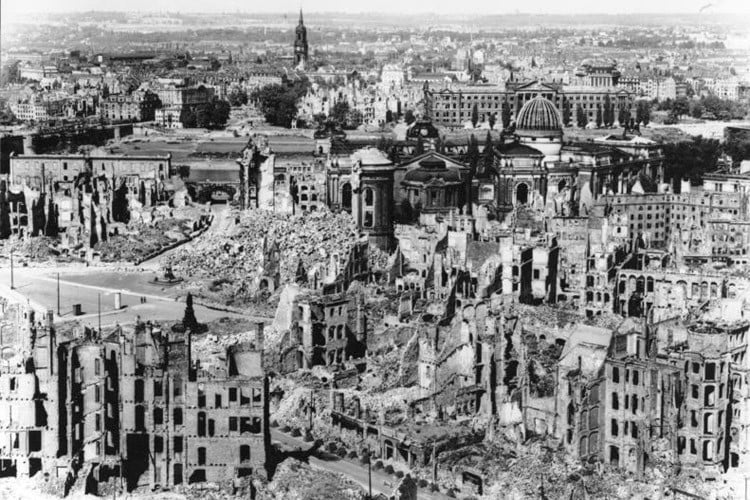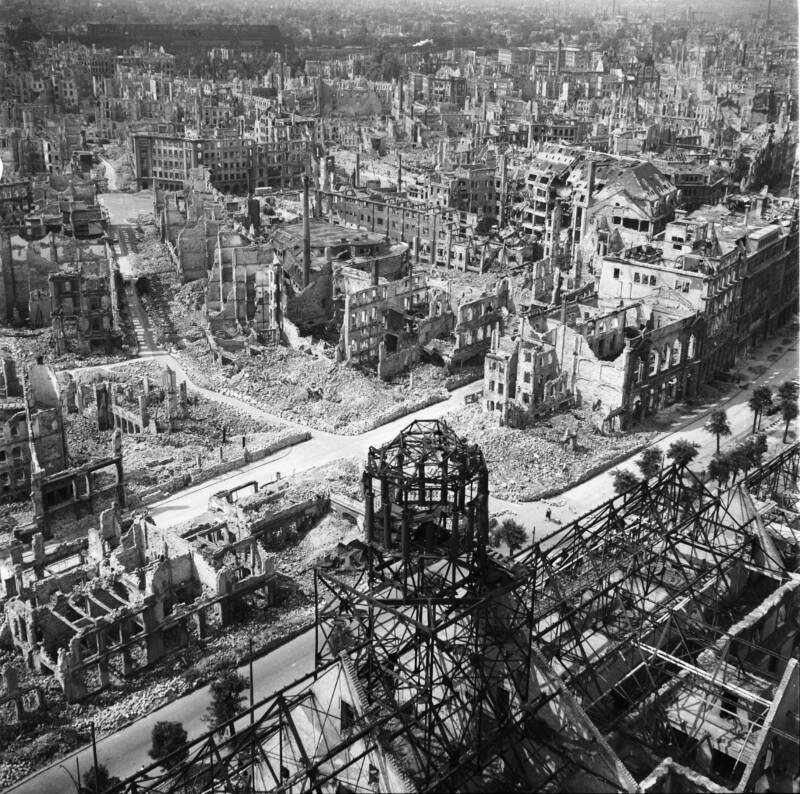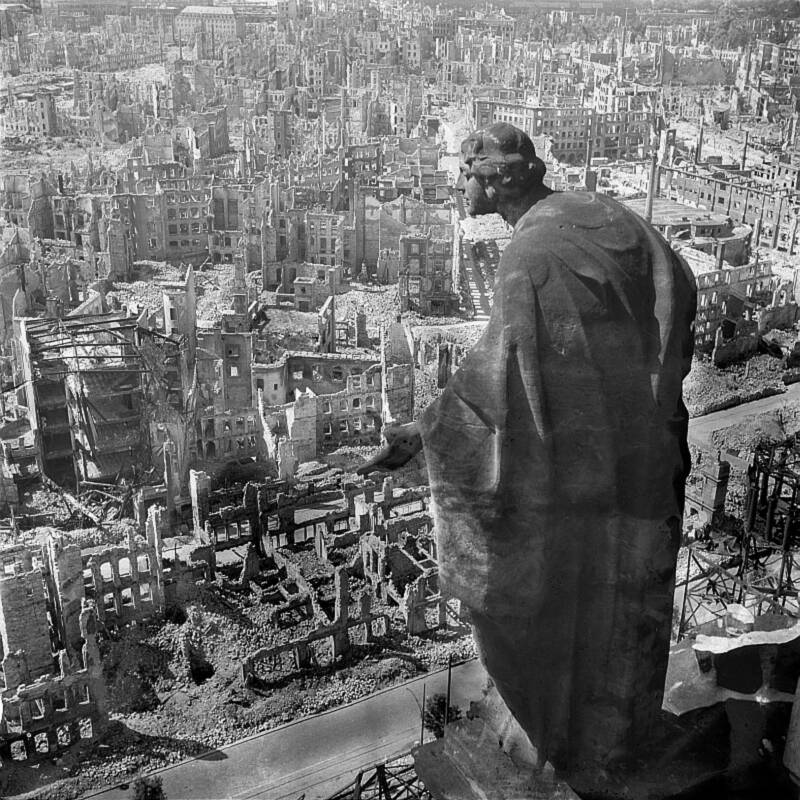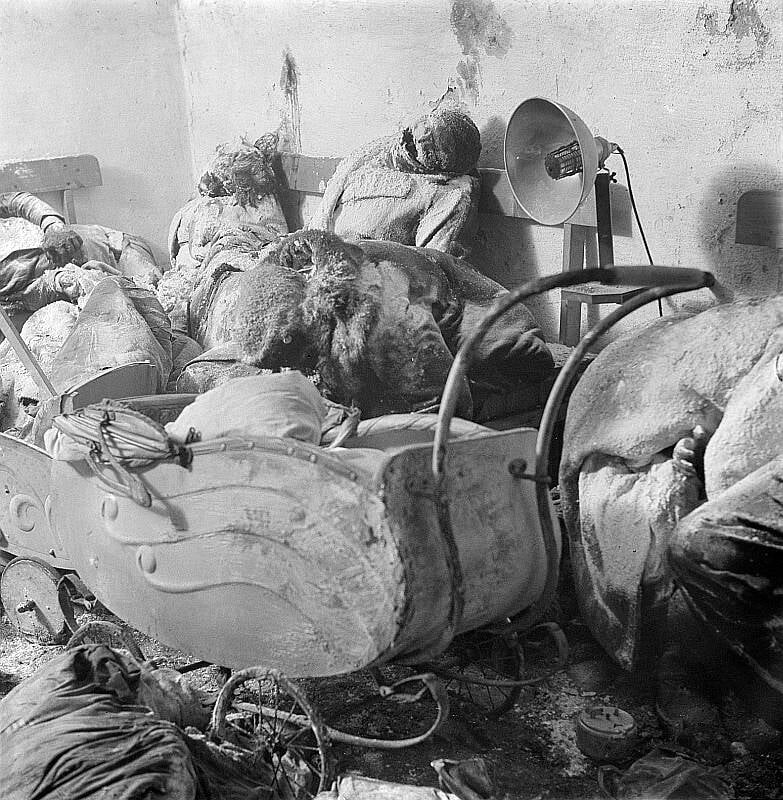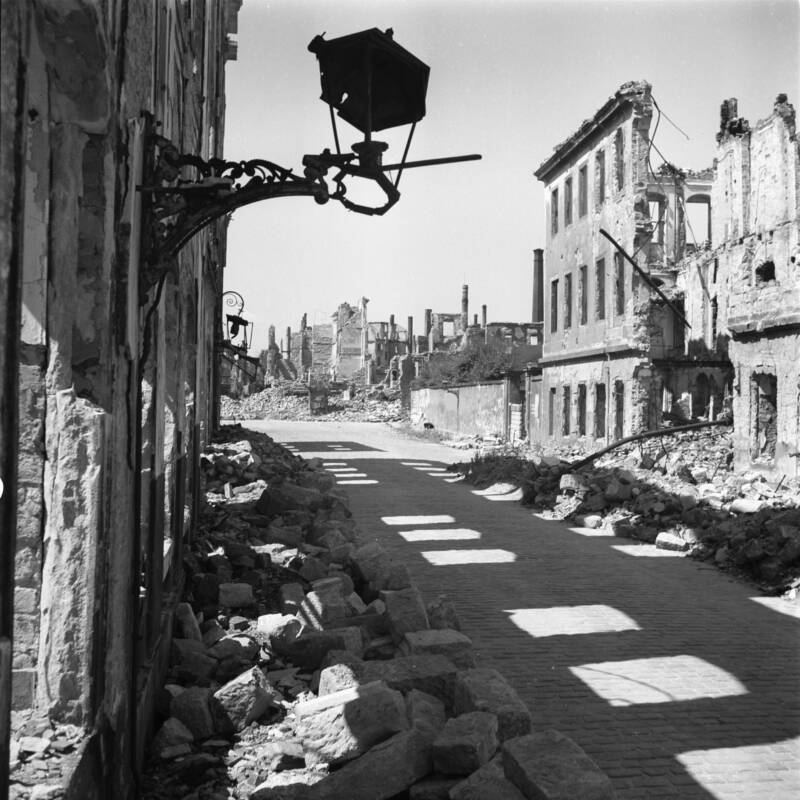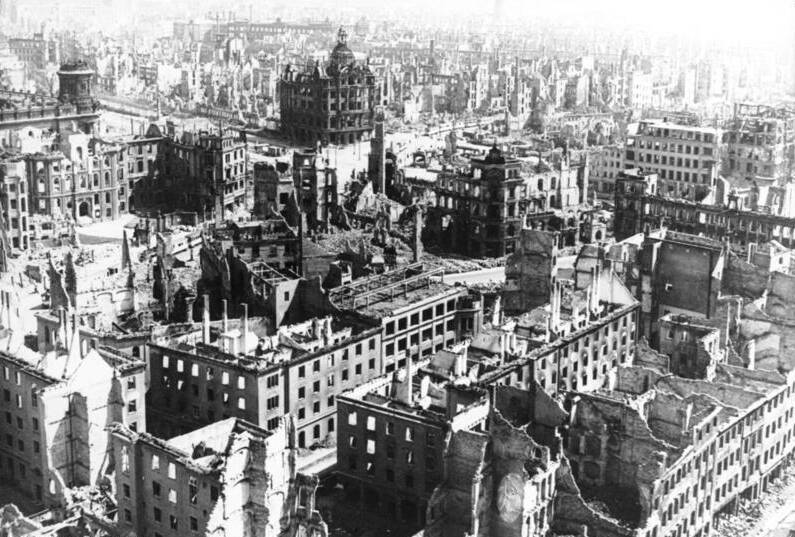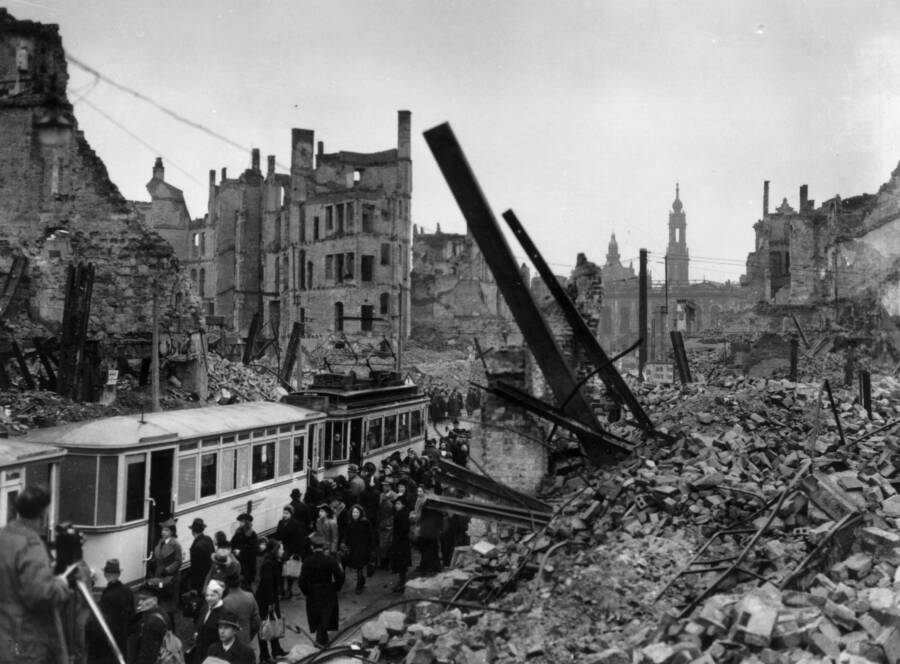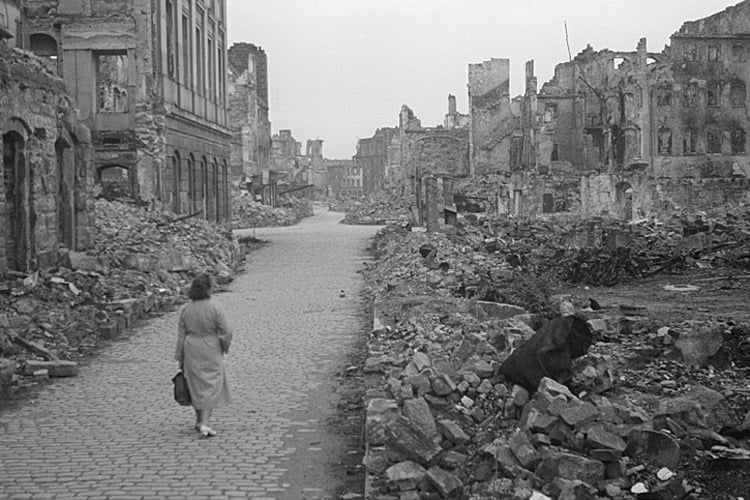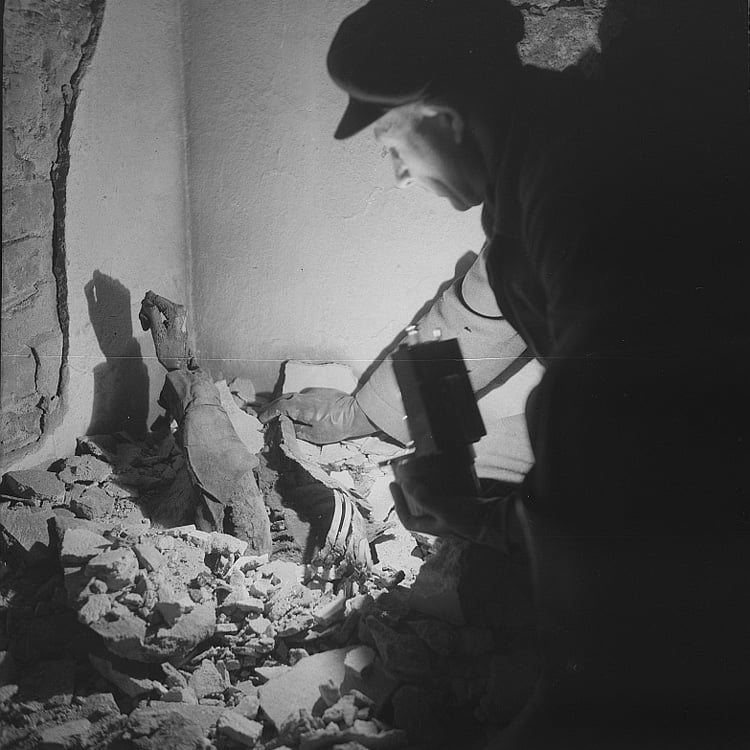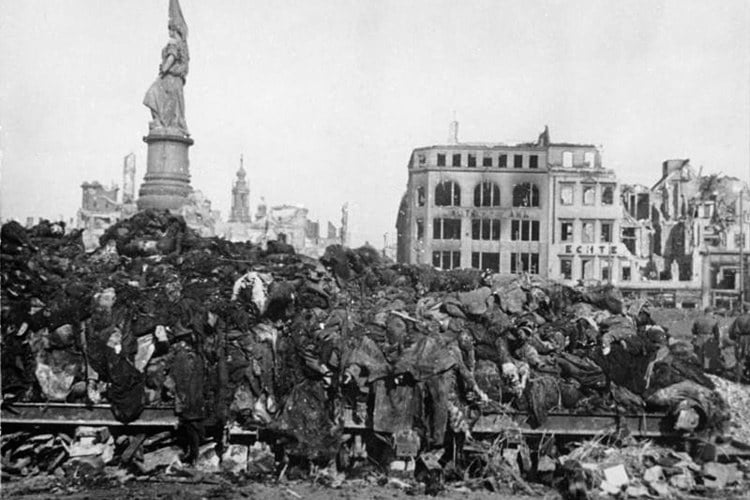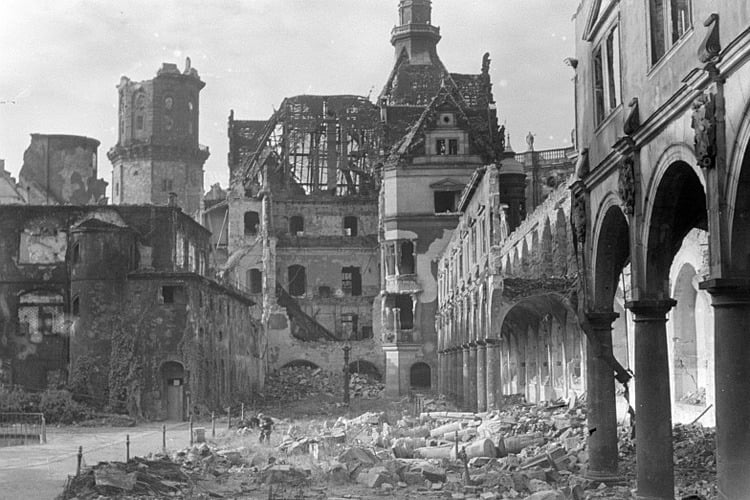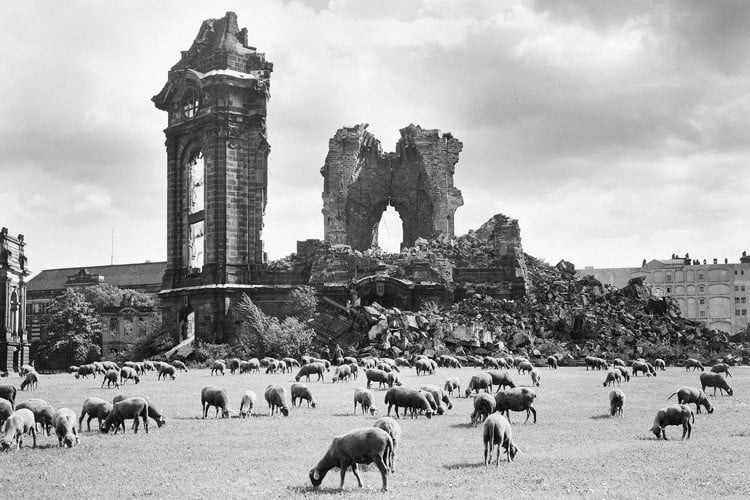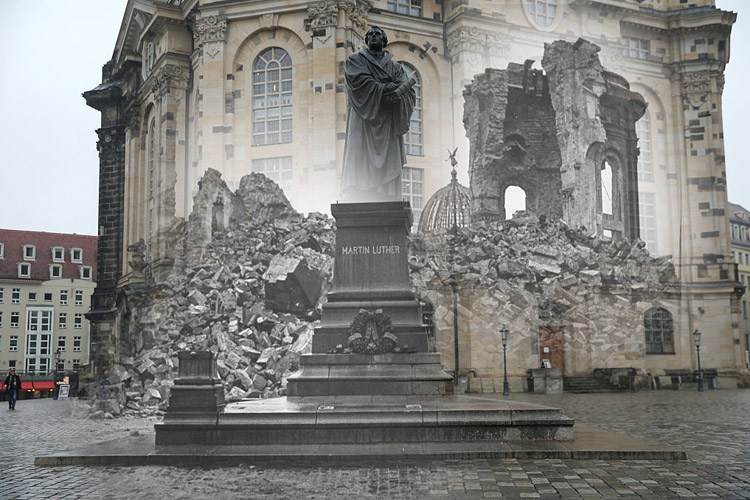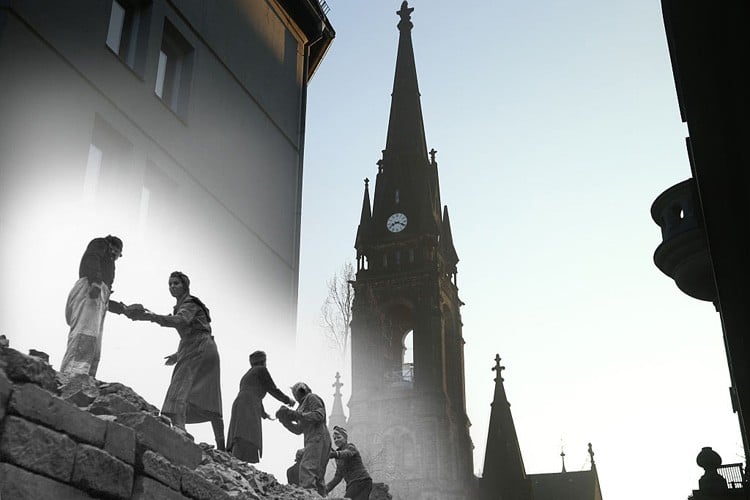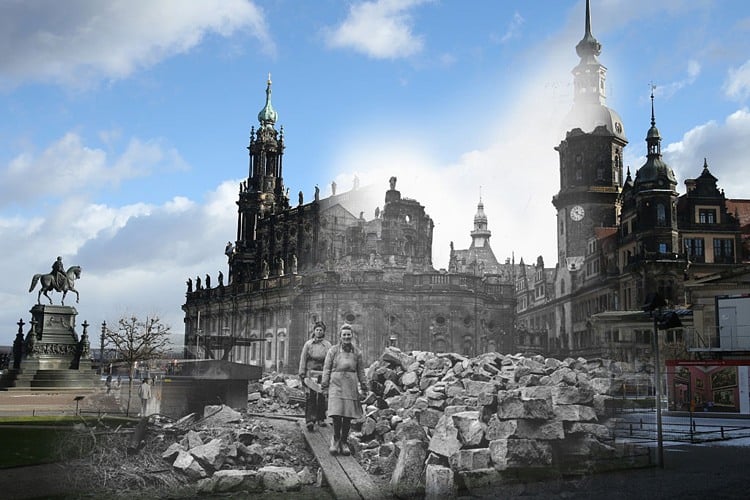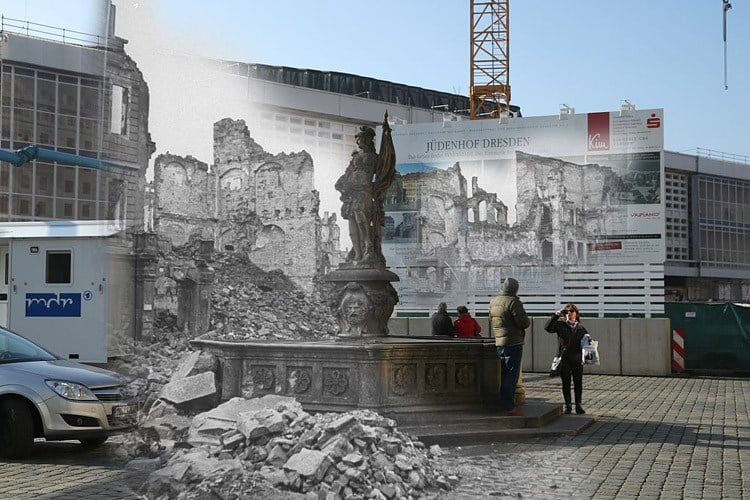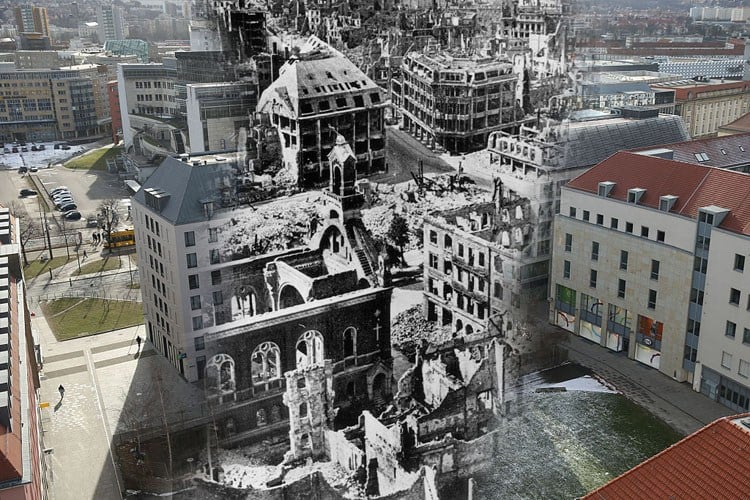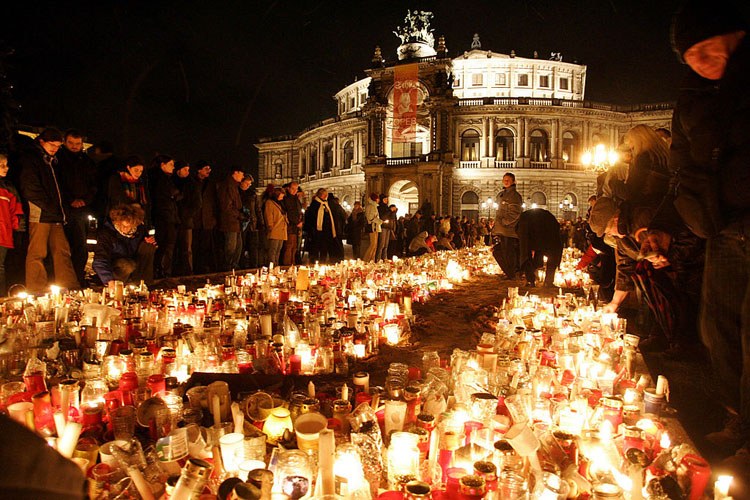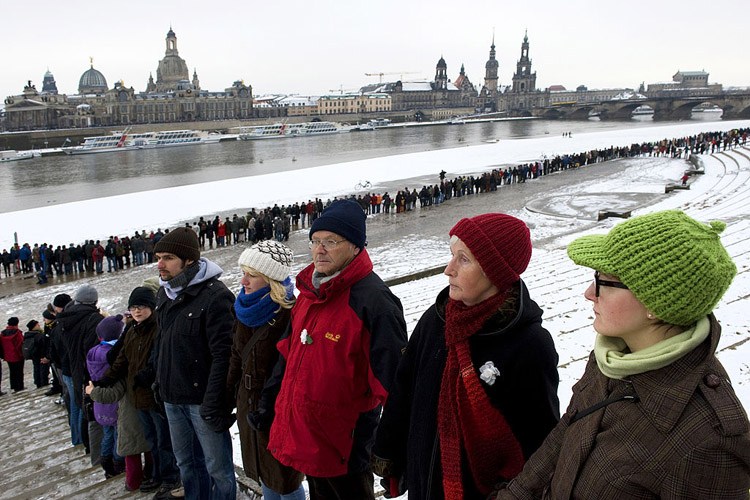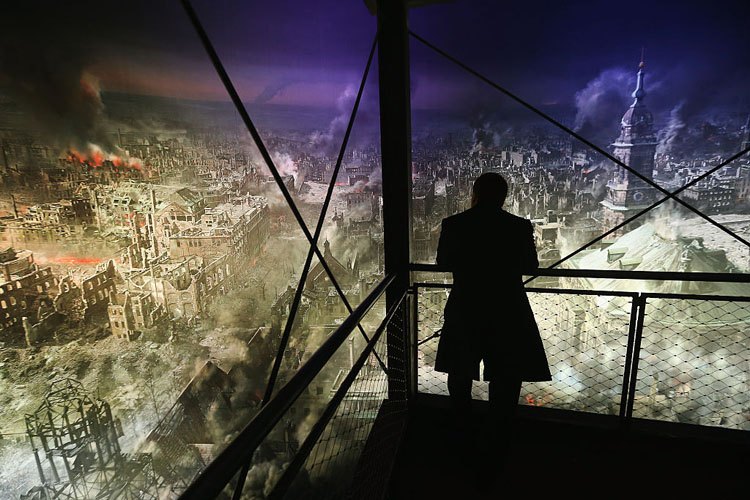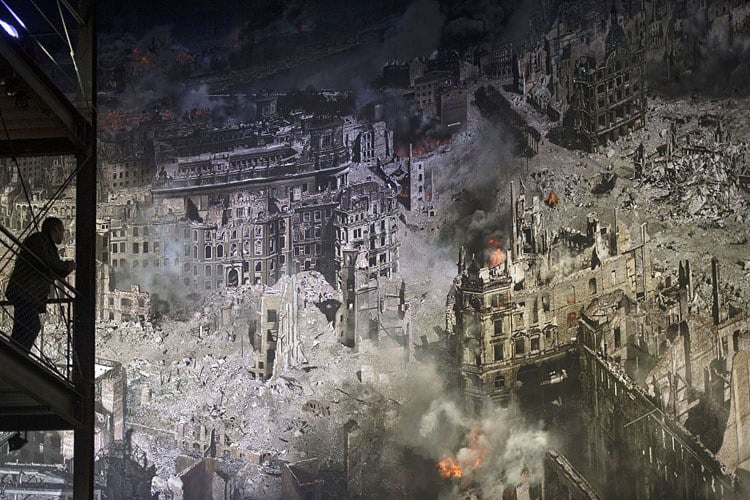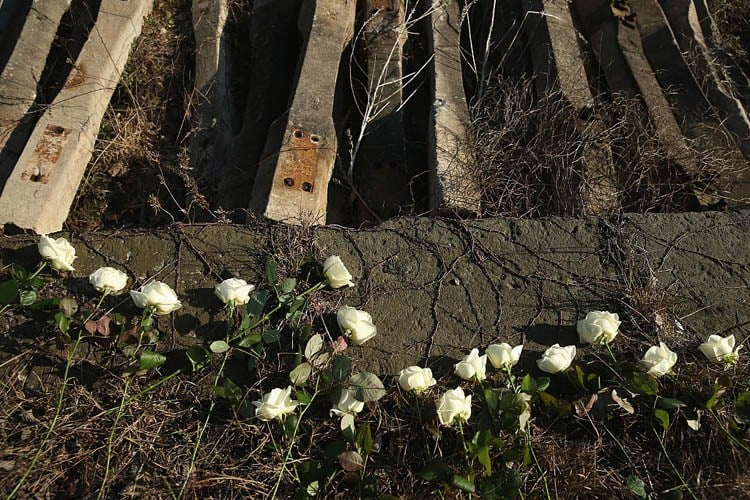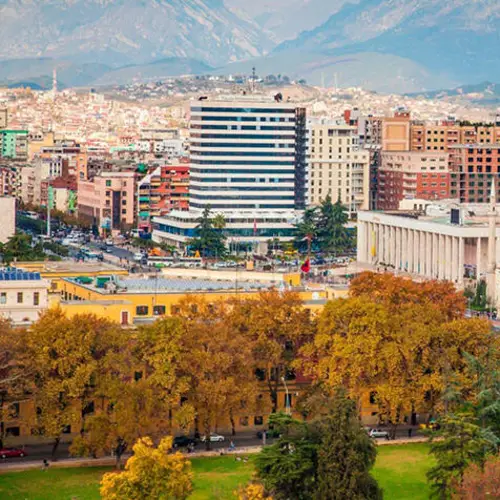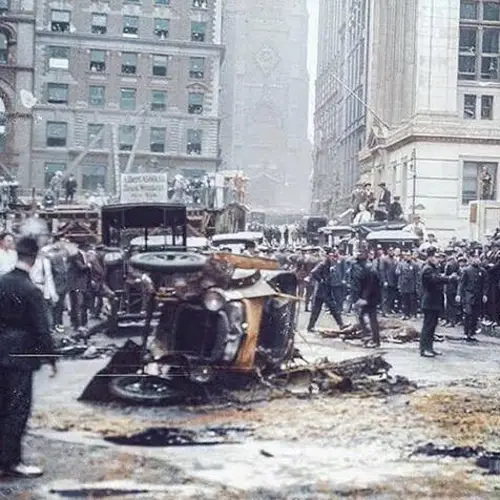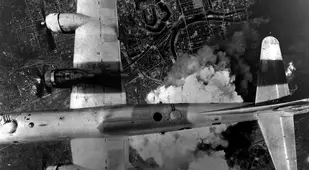Less than three months before Germany surrendered in World War II, the Allies' four-day firebombing of Dresden leveled the city center and killed 25,000 people, mostly civilians.
By February 13, 1945, Germany had all but lost World War II. Hitler was in hiding, yet British and American bombs burned the city of Dresden to the ground — and claimed the lives of approximately 25,000 innocent people with it.
In four separate bomb raids over three days, the Allied attempt to demoralize the Germans certainly succeeded. But was it justifiable so late in the war?
As people continue to mourn civilian deaths as a cost of war, the moral implications of the Dresden bombing still hang in the air. The photos above serve as a poignant reminder and testament to the true civilian toll that war takes — even on those who think they're safe.
Why The Allies Decided To Undertake The Dresden Bombing
Known as the "Florence of the Elbe," Dresden was Germany's seventh-largest city and had long been a point of cultural pride. It was the capital of the state of Saxony and was also called the "Jewel Box" because of its impressive mix of baroque and rococo architecture in the city center that still retained much of its narrow medieval street grid and timber-framed buildings.
For the Allies at the end of the war, however, Dresden became a target because it was a hub for Germany's network of railroads and the major junction for lines running to Berlin, Munich, Hamburg, and Prague. As the Soviets advanced on Germany from the east, these railroads became critical for the Nazis to supply their troops at the front and for carrying refugees away from the war.
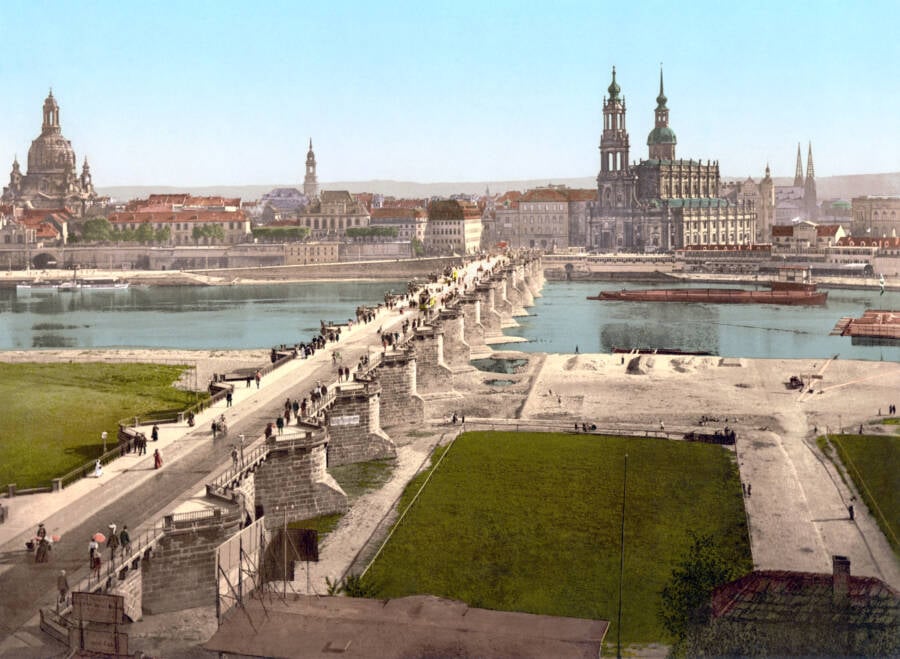
Library of CongressA colorized photograph of Dresden from across the Elbe River in 1891.
And while Dresden had a reputation for art, it was also home to more than 100 factories that manufactured everything from poison gas to munitions to aid the war effort. Moreover, it was the last built-up metropolitan area in the country that had yet to be bombed. This, according to a British Royal Air Force (RAF) memo, made it a valuable target.
"In the midst of winter with refugees pouring westward and troops to be rested, roofs are at a premium, not only to give shelter to workers, refugees, and troops alike, but to house the administrative services displaced from other areas," the memo read, according to historian Frederick Taylor's 2004 book Dresden.
"The intentions of the attack are to hit the enemy where he will feel it most, behind an already partially collapsed front, to prevent the use of the city in the way of further advance."
Bombing Dresden, the Allies reasoned, would overwhelm Nazi authorities by clogging the country's transportation network with thousands of displaced noncombatants and cripple Nazi Germany's ability to reinforce the Eastern Front, helping the Soviet advance.
But more than that, the Dresden bombing was specifically designed as a terror campaign, intended to strike fear into German civilians and force a swift call to end the war, according to History.
So, shortly after 6 p.m. on February 13, 1945, nearly 800 RAF and U.S. Army Air Force bombers took off from England and headed for the city. By 10 p.m., the city's air raid sirens blared. And within minutes, thousands of tons of bombs rained down on Dresden. Almost immediately, dozens of small fires combined into a firestorm that decimated the city center.
The Terrible Human Cost Of Bombing Dresden
Winston Churchill categorized the Dresden bombing and the killing of innocent people as a "terror bombing" — and terrifying it was. Flames engulfed the entire city. The unimaginable heat completely vaporized small children. Civilians who took shelter underground melted into liquid and bones.
But the first night-time Dresden bombing raid wouldn't be the last. Hours later, a squadron of U.S. Army Air Force planes approached the city and unleashed more carnage. According to one pilot quoted in the BBC, the light from the fire could be seen at 500 miles away, and the smoke reached miles into the air. Two more attacks followed in the next days.
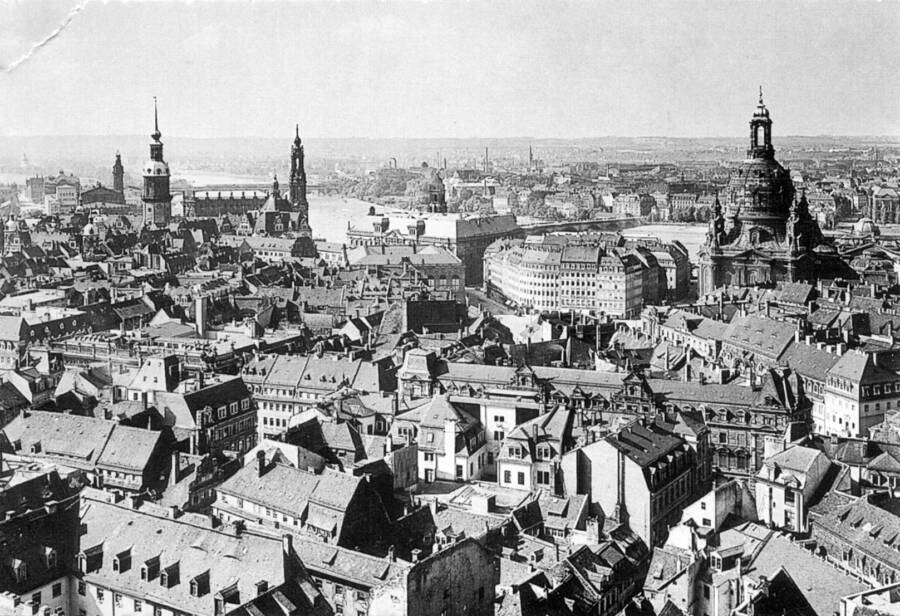

Wikimedia CommonsDresden's Altstadt (Old City), pictured in 1910. Ninety percent of the historic city center was destroyed after the bombing.
In the words of survivor Kurt Vonnegut, who was a prisoner of war in the city at the time and based his novel Slaughterhouse Five on the bombing, "Dresden was like the moon... nothing but minerals."
Another Dresden bombing survivor Lothar Metzger, recalled the event this way:
"We saw terrible things: cremated adults shrunk to the size of small children, pieces of arms and legs, dead people, whole families burnt to death, burning people ran to and fro, burnt coaches filled with civilian refugees, dead rescuers and soldiers, many were calling and looking for their children and families, and fire everywhere, everywhere fire, and all the time the hot wind of the firestorm threw people back into the burning houses they were trying to escape from. I cannot forget these terrible details. I can never forget them."
Metzger was just ten years old at the time.
By the time the Dresden bombing was over on February 15, 1945, the allies had dropped over 3,900 tons of bombs, and over 90 percent of the city center was in ruins — an area of about eight square miles.
Was The Mission A War Crime?
Dresden burned for weeks as the city's meager fire force struggled to fight the flames. According to the National World War II Museum, there were so many dead that Nazi officials piled bodies on top of steel trusses in the Old Square and cremated them en masse. That job, too, took weeks to complete.


Julia Faßbender/BundesarchivSome of Dresden's most famous landmarks remained in ruins for decades after the bombing, like the Frauenkirche, pictured here in July 1991.
According to the city of Dresden's official report, 25,000 people had been killed, though they noted that because there were a large number of uncounted refugees residing in the area and because so many victims had been vaporized, the true count could be as high as 35,000.
In the days after the Dresden bombing, Joseph Goebbels called it a war crime, and Germany's Propaganda Ministry claimed that over 200,000 people had died in the attack. They also claimed that the city had never been part of the country's war industry but was instead a purely civilian target. And despite several reports to the contrary, to this day, those claims are repeated by neo-Nazi and far-right groups in Germany.
But Nazi propagandists weren't the only ones who looked at the Dresden bombing with dismay and wondered if a crime had been committed. According to the BBC, in the aftermath, British members of parliament questioned the value of the attack, and an Associated Press article claimed that the Dresden bombing was part of a dedicated "terror campaign" aimed squarely at the German civilian population.
Even Winston Churchill himself, who had authorized the raid, questioned the end result of the Dresden bombing, saying "the destruction of Dresden remains a serious query against the conduct of Allied bombing."
See why many categorize the Dresden bombing as a war crime and discover which other events join its ranks in this look at the worst U.S. war crimes of World War II. Then, have a look at these stirring World War II photos that bring the entire catastrophe to life.

